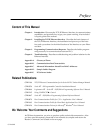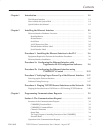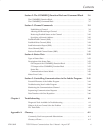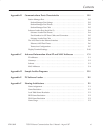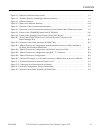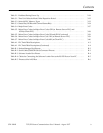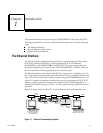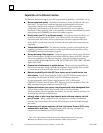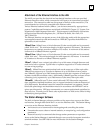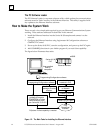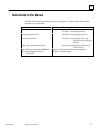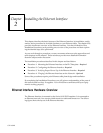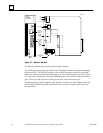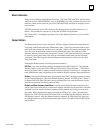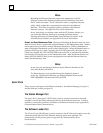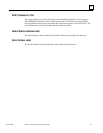
1
1-3
GFK-1084B Chapter 1 Introduction
Attachment of the Ethernet Interface to the LAN
The AAUI port provides the electrical and mechanical interface to the user-provided
Ethernet transceiver cable, which connects the AAUI port to an external user-provided
transceiver. (The transceiver cable may be separate or built-in to the transceiver.) The
external transceiver is directly connected to the Ethernet cable.
Various Ethernet baseband media (10Base...) can be interconnected by appropriate re-
peaters. Capabilities and limitations are defined in IEEE 802.3 Chapter 13, “System Con-
siderations for Multi-Segment Networks”. This document is published by the Institute
of Electrical and Electroncs Engineers, Inc., 345 East 47th Street, New York, NY
10017-2394 USA.
The Ethernet Interface can operate on any of the following media with the appropriate
user-supplied transceiver cable and transceiver. IEEE 802.3 specifies the definitive re-
quirements of each medium.
10Base5 Coax: 10Base5 uses a 0.4 inch diameter 50-ohm coaxial cable and is commonly
called “thick wire”. The maximum length of a cable segment is 500 meters. The distance
between any two stations must be a multiple of 2.5 meters. A maximum of 100 stations
is allowed on a 10Base5 Ethernet segment.
10Base2 Coax: 10Base2 uses a 0.2 inch diameter 50-ohm coaxial cable and is commonly
called “thin wire”. The maximum length of a cable segment is 185 meters. A maximum
of 30 stations is allowed on a 10Base2 Ethernet segment.
10BaseT: 10BaseT uses a twisted pair cable of up to 100 meters in length between each
node and a hub or repeater. Typical hubs or repeaters support 6 to 12 nodes connected
in a star wiring topology.
10BaseF: 10BaseF has two variations that both use the same type of fiber-optic cable:
10BaseFP can support up to 33 nodes at distances of up to 500 meters from a passive
star; 10BaseFL supports up to 2000 meters between a node and a repeater (a multi-port
repeater would thus constitute a star). Additionally, 10BaseFB provides a means of inter-
connecting (only) repeaters by up to 2000 meters of (the same) fiber-optic cable.
10Broad36: 10Broad36 uses 75-ohm coaxial cable and CATV-like media components
(taps, amplifiers, headend translators, etc.) to support hundreds of nodes at distances of
up to 2800 meters. Broadband cannot be connected to baseband via repeaters. Broad-
band cable plant design and installation must be in accordance with IEEE 802.7 and re-
quires special expertise. GE Fanuc recommends you contract professional specialists for
these services. Consult your GE Fanuc sales representative or field service office for help
in identifying local specialists.
The Station Manager Software
The built-in Station Manager software provides on-line supervisory access to the Ether-
net Interface, through either Serial Port 1 or over the Ethernet cable. The Station Manag-
er services on the Ethernet Interface include:
An interactive set of commands for interrogating and controlling the station.
Unrestricted access to observe internal statistics, an exception log, and configuration
parameters.
Password security for commands that change station parameters or operation.
Access to the Station Manager is attained through a user-provided computer terminal or
terminal emulator. See GFK-1186 for more information on the Station Manager.



